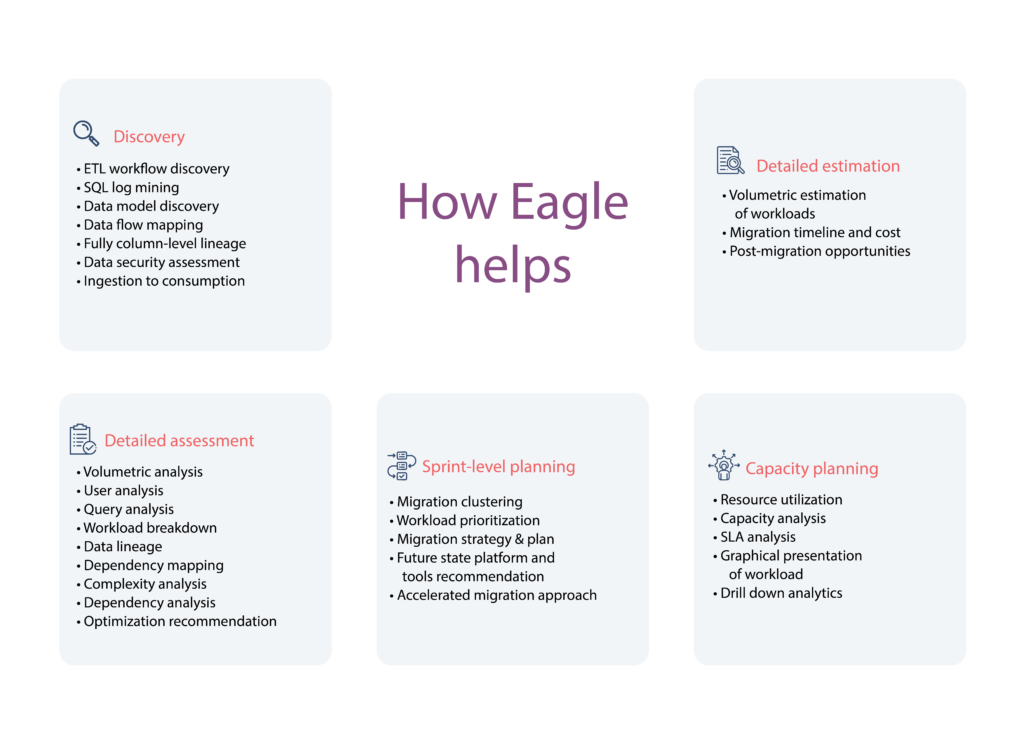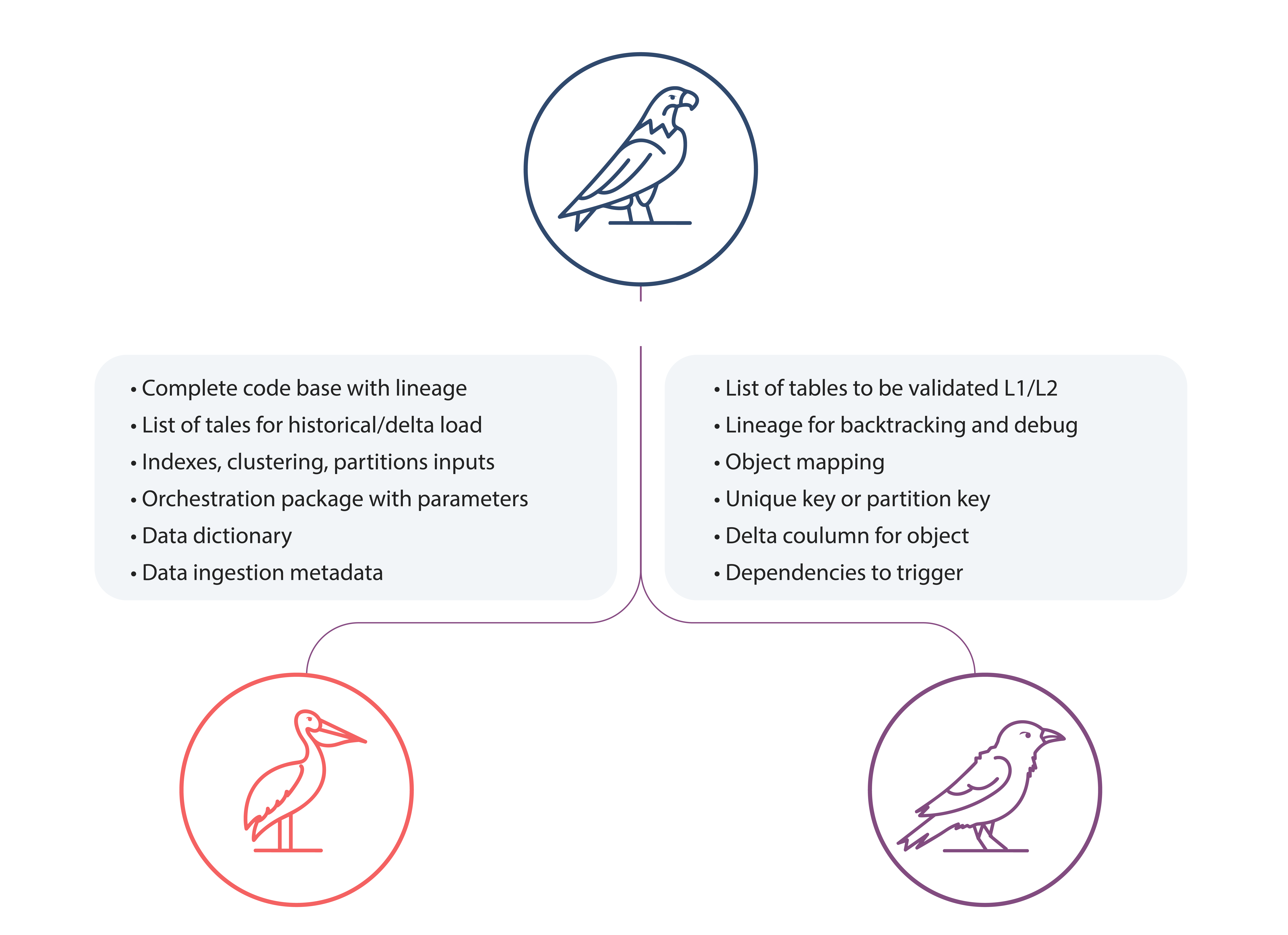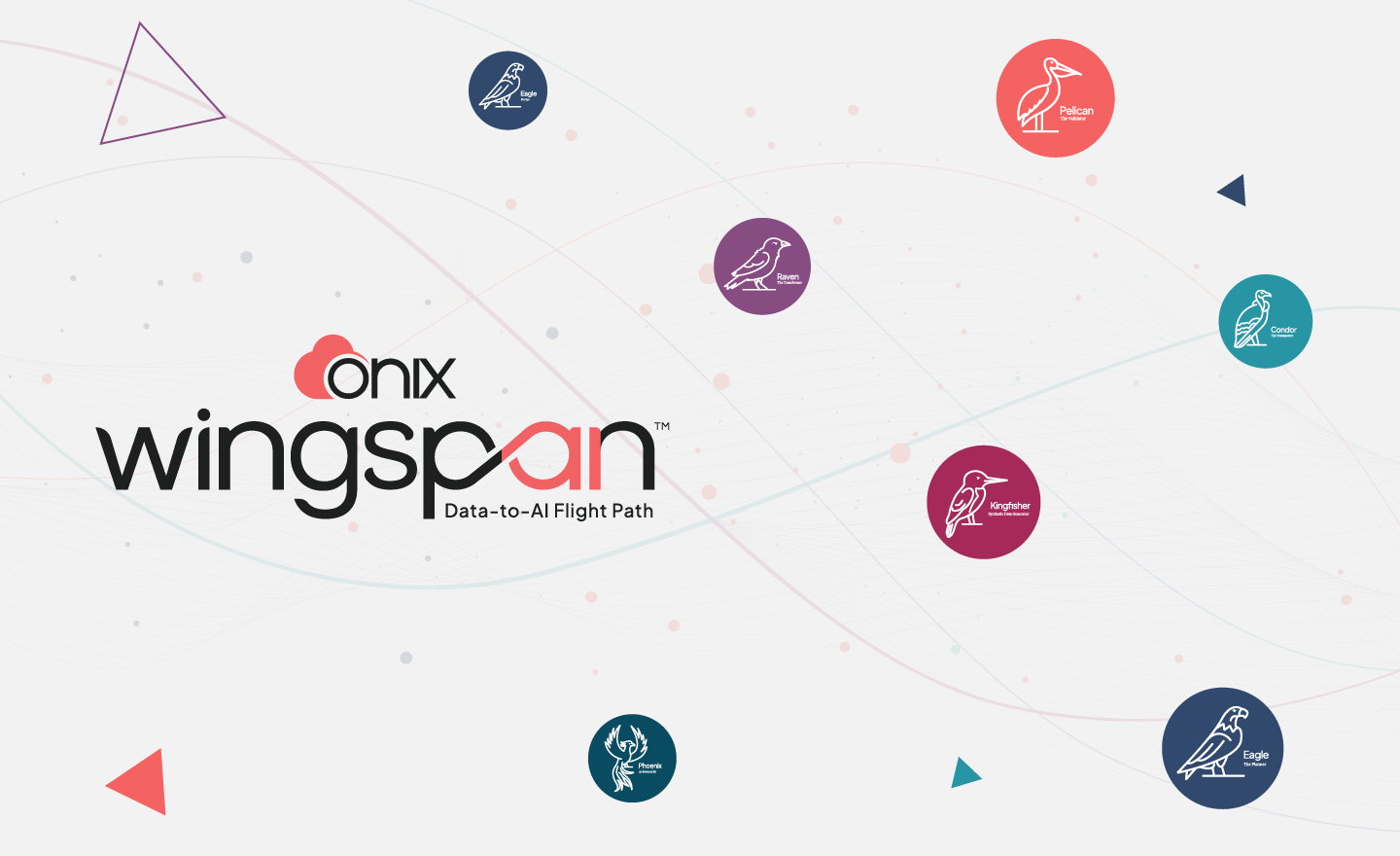As a data-driven culture becomes more prevalent, enterprises depend on data-backed business decisions instead of intuitions. In this regard, real-time analytics is an essential tool for enterprises to respond to market changes.
At the same time, traditional warehouses with structured data are proving expensive and time-consuming for modern business needs. Hence, enterprises are opting for a data lakehouse like Databricks to combine the reliability of a data warehouse with the flexibility of a data lake.
That said, enterprises face a host of technical challenges while migrating their legacy data and workloads to the cloud. Without proper migration planning and assessment, a majority of cloud migration initiatives are likely to fail.
An efficient assessment and planning tool can deliver a host of migration-related benefits for enterprises including:
- Minimizing the risks during the migration process.
- Avoiding (or minimizing) business disruptions caused by the migration.
- Planning the cloud migration process with an eye on:
- Risk assessment
- Dependency mapping
- Prediction analysis
How inadequate assessment can impact cloud migration
While preparing for cloud migration, most organizations fail to understand the value of comprehensive assessment and planning. This can potentially lead to issues like delayed migration, cost escalations, and even failed migration.
As the foundation of a successful cloud migration, a proper assessment strategy involves analyzing the existing IT infrastructure, data, and applications. Some of the key components of assessment and planning include:
- On-premises infrastructure and data dependencies
- Application portfolio
- Data assessment and compliance
Complicated application dependencies can disrupt cloud migration in the following ways:
- Incomplete data transfers resulting in missing information
- Failed user authentication for identity-related services
- Broken integrations with third-party tools and services
- Data security issues and compliance violations due to data exposure during migration
- Lack of visibility into data lineage
Why data lineage matters in any cloud migration initiative
Data lineage provides an understanding of data dependencies and flows between various applications and systems. For any cloud migration initiatives, enterprises must factor in the data lineage factor as the means to ensure:
- Data quality and consistency
- Data dependencies
- Data integrity and governance
Data lineage is crucial as it ensures that data is migrated properly to the new cloud environment and is ready for use. With data lineage, enterprises have complete visibility into data storage and access for the new environment.
Automating assessment and planning using the Eagle tool
As an automated data warehouse assessment tool, Eagle has enabled multiple enterprises to smoothly migrate to the cloud. Effectively, the Eagle planning tool can assess legacy warehouses and identify various dependencies and complexities. Here’s a recent case study of how a U.S.-based insurance provider accelerated their data migration process using the Eagle tool.

Here’s what differentiates Eagle when it comes to migration assessment and planning:
- Detailed Assessment
- Workloads
- Logs
- ELT and ETL scripts
- Accurate Budget Estimate and Timeline
- Complete analysis of the existing data workloads, data models, and volumetrics.
- A correct estimate of the required resources to be utilized for the migration along with their costs.
- Post Assessment
- Raven to automate code conversion and migration
- Pelican to automate code validation after migration
- Kingfisher to generate high-quality synthetic data for training AI models
- Eagle FinOps: Continuous post-migration optimization, beyond migration
As an automated planning tool, Eagle can perform a detailed assessment of the existing warehouse system, including components like:
Additionally, Eagle can identify all the data dependencies in on-premises systems like Oracle and Teradata to avoid complications at a later stage. By dividing the migration project into multiple phases, Eagle enables enterprises to define their workloads and migrate them according to their priority. This speeds up the overall migration process and achieves ROI quickly.
38% of enterprises waste 30% of their cloud spending budget. Enterprises often overrun their cloud migration costs for a variety of reasons – including the failure to assess their existing applications and workloads.
Through its powerful assessment, the Eagle tool provides an accurate estimate of the required budget and timeline for cloud migration. Here’s what enables this tool to provide an accurate estimate:
As part of Onix’s Birds suite, Eagle is fully integrated with other migration-related tools like:

By automating warehouse assessments, Eagle helps companies understand their data patterns and data lineages. Further, it can identify the existing workloads primed for migration, and recommend the right cloud migration model. Effectively, this enables enterprises to plan their optimum resources for migration and understand the underlying complexities.
Conclusion
In today’s complex IT environment, enterprises cannot streamline their cloud migration without a proper assessment and planning strategy.
With years of experience in cloud migration and modernization, Onix is the right partner with expertise in legacy assessments. Our Eagle tool can help you plan your cloud migration with an accurate time and cost estimate.
Ready to learn more about our Eagle tool? Book a free product demo today.









